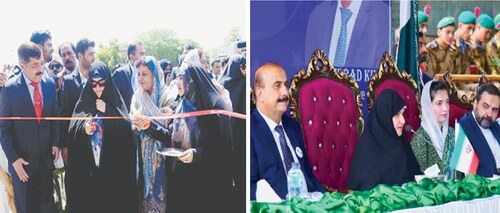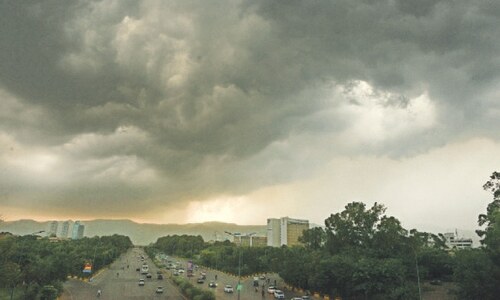ISLAMABAD: In a new campaign aiming to raise awareness among Pakistani youth about the Sustainable Development Goals (SDG) 2030, the United Nations (UN) will write their values across school walls so that schoolchildren may always remember them and share them with others.
This was announced by United Nations Information Centre (UNIC) director Vittorio Cammarota at an interactive session on Tuesday that aimed to raise awareness among the Pakistani youth about the Sustainable Development Goals (SDGs) 2030.
The seminar, titled ‘The UN Wall campaign, Pakistani Youth promoting UN values’ was hosted by the UNIC, ILO and other UN agencies as part of a nine-day festival celebrating the UN’s 70th anniversary.
At the event, Cammarota said the world body wanted young people to carry its message forward and help achieve the new goals. He likened the global organisation to a big family.
“We are all brothers and sisters and we need you to help us convey our message. Tell your family and friends about what you learn here today.”
Unicef country representative Angela Kearning also spoke at the event. She said the UN, Unicef and the Pakistani government were working together to ensure that every child got their rights. She said the world had sat down and promised to grant all children their rights many times, but “in reality we are a long way from granting these rights”.
“Children are being deprived of even the very basic rights, like birth registration, food and access to clean water,” she said.
Kearning explained that the SDGs are the second time the world had set specific goals, the first being the Millennium Goals 2015.
Addressing children, she said: “Many of the SDGs are related to children, and we need young people like you to help us achieve them. Everyone has a responsibility to help achieve the SDGs. If just a million people contribute a little towards them it will still make a huge difference.”
The seminar simplified the SDGs for the children in the audience and explained the various problems less fortunate children face and showed them how they could make a difference.
A workshop hosted by the ILO screened an animation depicting various kinds of child labour and explained how different the lives of working children are. The cartoon told the story of four children who worked to support their families.
The animation then tackled even greater horrors that some children had to face. For example, the film included the story of an orphaned child who was sold to an older man as a ‘wife’. The film said these children were often resold by the ‘buyers’.
The children in the audience said the film made them realise how important it is to ensure that every child has a normal childhood. They also commended the UN for bringing such issues to the forefront.
Sabeen Mehmood, a teacher, simplified some of the problems facing children around the world for the audience through an animation that also featured a message from Malala Yousufzai.
Mehmood told the children in the audience that they too could contribute towards achieving the SDGs through small acts, like conserving water and not littering.
Midhat Zaidi, a member of the Unicef communication team, said the goals seemed daunting and abstract at first, but added that: “When you break them down for yourself they are very achievable.”
Speaking to Dawn, Zaidi highlighted the UN’s work in rural areas, which she said was much more important “because the problems there are real”.
She explained that in Khyber Pakhtunkhwa (KP) and Balochistan the UN holds a weekly camp where children participate in shared activities.
“They have a chance to interact with communities they are otherwise segregated from. And so, by simply things like playing cricket, these kids are slowly but surely breaking down cultural barriers.”
“You can see children from different communities interacting, getting to know each other and letting go of cultural animosity. One can see Hindu and Muslim kids together, Hazara and Pakhtun children playing on the same team. That is where the big impact is.”
Published in Dawn, October 14th , 2015
On a mobile phone? Get the Dawn Mobile App: Apple Store | Google Play














































Dear visitor, the comments section is undergoing an overhaul and will return soon.